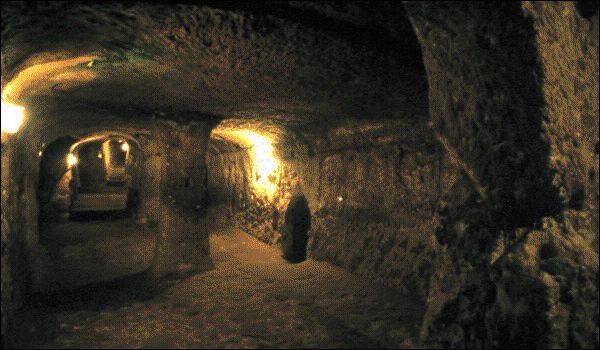
Derinkuyu is notable for its large multi-level underground city (Derinkuyu Underground City), which is a major tourist attraction. The historical region of Cappadocia, where Derinkuyu is situated, contains several historical underground cities, carved out of an unique geological formation, and were largely used by early Christians as hiding places. They are not generally occupied. Over 200 underground cities at least two levels deep have been discovered in the area between Kayseri and Nevşehir, with around 40 of those comprised of at least three levels or more. The troglodyte cities at Derinkuyu and Kaymakli are two of the best examples of underground dwellings.
The oldest written source about underground cities is the writings of Xenophon. In his Anabasis he writes that the people living in Anatolia had excavated their houses underground, living well in accommodations large enough for the family, domestic animals, and supplies of stored food.[1]
Derinkuyu Underground City provided a refuge for the region's inhabitants through the ages, for early Christians as well as possibly earlier dwellers, to Greeks hiding from the raids of the Umayyad Arab and Abbasid armies. The cities contained food stores, kitchens, stalls, churches, wine and oil presses, ventilation shafts, wells and a religious school. The Derinkuyu underground city has seven floors and a depth of 85 m and could have sheltered thousands of persons.